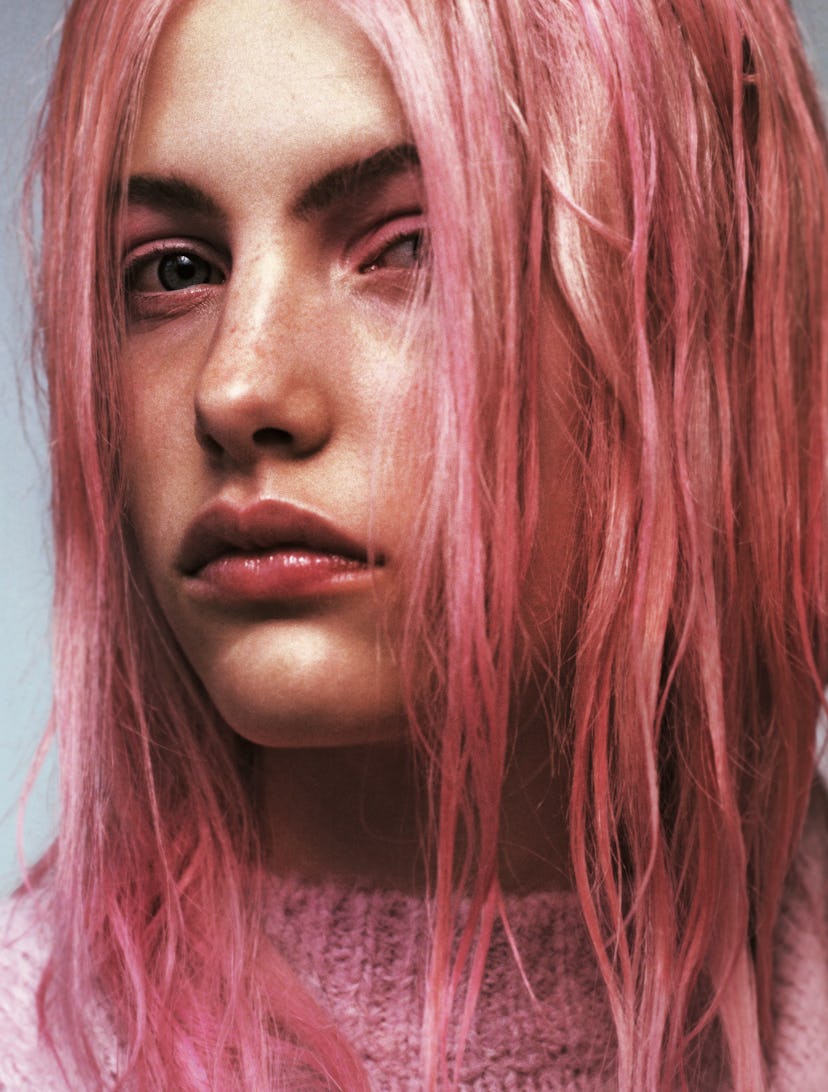If #BeautyTikTok had a tagline, it would be “can’t stop, won’t stop.” Although the app rotates through beauty trends quicker than we can refresh our FYP, we’d be lying if we said we haven’t come across a promising one every now and then. Case in point: skin cycling, which has evolved into what’s called hair cycling. This trend involves putting all of the attention on your mane and strategically using products to maintain its health. But is hair cycling as efficacious as skin cycling? We consulted with hair experts to find out if it’s a must or bust.
What Is Hair Cycling?
A hair cycling routine spans a series of shampooing, conditioning, and styling sessions that uses specific products to target particular hair needs, says Amy Abramite, creative director and hairstylist at Maxine Salon in Chicago. The concept is actually simpler than it sounds. Much like your skincare routine centers around what your skin is going through at any given moment (think: a hydrating mask if you’re dealing with dryness, an acne-fighting cleanser if you’re battling breakouts), hair cycling follows a similar principle.
While your specific hair type and texture will play a role in how you’d structure the cycling, most hair cycling routines follow the same game plan: “The first cycle is to detox and clarify, the second is to repair and strengthen, and the third is to prep hair for the best styling results,” says Abramite.
The Benefits of Hair Cycling
According to Kerry E. Yates, trichologist and founder of Colour Collective, our hair and scalp conditions are constantly changing as a result of both internal and external conditions. For instance, your hair may, at times, produce an excess amount of oil due to hormonal changes. Or, the opposite can occur: seasonal shifts to colder weather could mean dandruff, dry scalp, and irritation are at play. Hair cycling tackles these challenges head-on. “By alternating hair care products, hair cycling addresses the issue at hand and preps the hair and scalp for optimal health,” says Abramite.
Hair cycling can also be beneficial if you’re the type to never switch up your hair care products. “Repeat use of the same product over time can overcorrect one problem and cause another,” Abramite tells W. Take scalp scrubs, for example. While they may be an integral part of a haircare routine (particularly if you struggle with dandruff), Abramite warns that constant use can over-exfoliate and strip hair of moisture, leaving the scalp dry, itchy, and irritated. The same goes for using moisture-rich products all the time. “Overdoing deep conditioning treatments can cause a heavy buildup of oils, leading to clogged pores, and making a hairstyle go limp,” says Abramite. Rotating through different formulas as with hair cycling, however, ensures your hair isn’t getting too much of a good thing (which can eventually be detrimental to its health, adds Yates).
Hair Cycling Routine
Hair cycling is beneficial for anyone, but it’ll look different for everyone. For example, “If someone has color-treated hair and the protein structure is compromised, this person may cycle in a protein treatment every other week to counteract breakage,” says trichologist and creator of Alodia, Dr. Isfahan Chambers-Harris. “Or, if someone has product buildup because they wore braids for several weeks, [they] may cycle in a clarifying shampoo to get rid of buildup.” It’s up to you to take into account the factors that may affect the health of your hair and scalp, and cycle in products accordingly. Just to clarify: hair cycling is great for any and all hair types.
Here’s a sample hair cycling routine, as set out by Abramite.
First Wash (Detox and Clarify): On the first cycle, use a clarifying shampoo to remove buildup, excess oil, or dry skin. Follow up with a hydrating mask to replenish moisture and seal it all in with a leave-in conditioner to reinforce moisture for a few days before the next cycle.
Second Wash (Repair and Strengthen): “The second cycle is for repairing and strengthening weakened hair strands,” says Abramite. “A bond-building shampoo, conditioner, and styling product will fortify the hair cuticle in preparation for heat styling and chemical services, like coloring and texture-altering treatments.” This is a key step in damage prevention.
Third Wash (Prep for Styling): The third cycle involves using products that’ll help you achieve the best styling results—whatever your styling goals are. Abramite recommends using a shampoo, conditioner, and styling product that will work synergistically to prep the hair. For instance, if volume is what you’re after, go for a volumizing shampoo followed by a light conditioner on the ends and a mousse or volumizing spray as your styling product.
